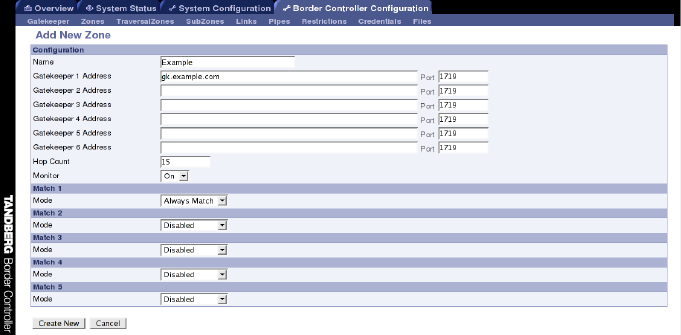
TANDBERG Border Controller User Manual
Figure 1: Adding a new zone
3.4 Alternate Border Controllers
Alter na te Border Controller support is provided to increase the reliability of your deployment. If
one Border Controller becomes unavailable, perhaps due to a network or power outage, another
will be used as an Alternate. Alternates share responsibility for their endpoint community: an
individual endpoint may be registered with any one of the Alternates. You should configure
Alter nates identically for all registration and call features such as authentication, bandwidth
control and policy. If you do not do this, endpoint behavior will vary unpredictably depending on
which Alternate it is currently registered with. Alternates should also be deployed on the same
LAN as each other so that they may be configured with the same routing information such as
local domain names and local domain subnet masks.
Each Border Controller may be configured with the IP addresses of up to five Alternates. When
an endpoint registers with the Border Controller, it is presented with t he IP addresses of all the
Alter nates. If the endpoint loses contact with its initial Border Controller, it will seek to register
with one of the Alternates. This may result in your endpoint community’s registrations being
spread over all the Alternates.
Enterprise Gatekeepers which register with the Border Controller may al so be given a list of
Alternate Border Controllers to use.
When a Border Controller receives a Location Request, if it cannot respond from its own
registration database, it will query all of its Alternates before responding. This allows the pool of
registrations to be treated as if they were registered with a single Border Controller.
The Alternate Border Controllers ca n be configured w ithin the web interface of the Border
Controller by navigating to Border Controller Configuration → Gatekeeper. Up to five different
alternates can be configured. Please see Figure 2 for a screenshot of a sample configuration.
10


















